Squaring the Circle: A Historical and Modern Analysis
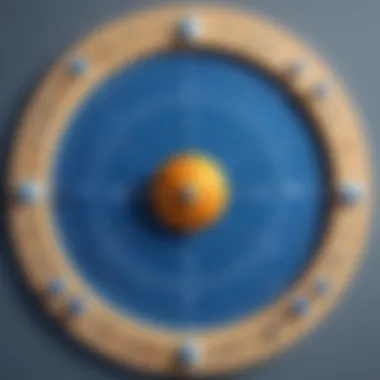
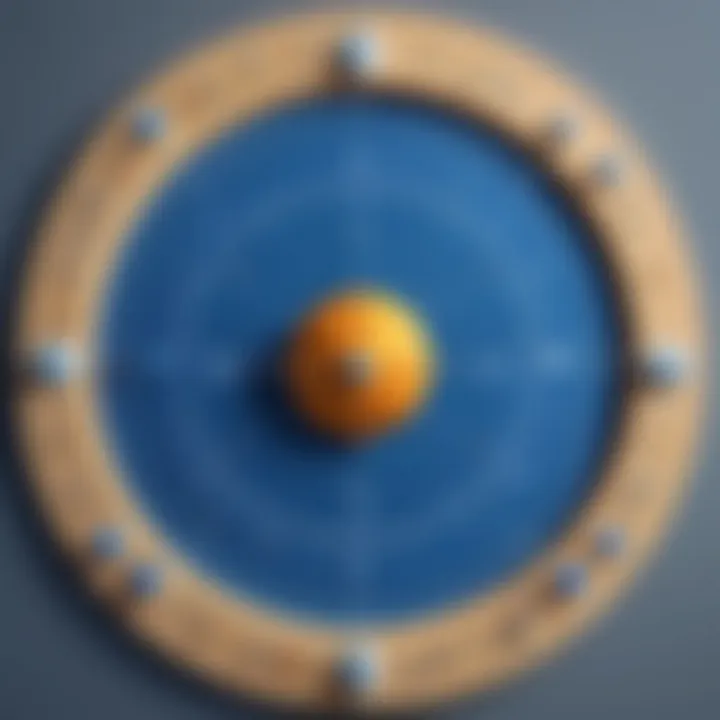
Intro
The concept of squaring the circle has been a thorn in the side of mathematicians for centuries. It's a classic problem in geometry that has intrigued thinkers from ancient civilizations to modern mathematicians. Despite its simple formulation, the attempts to create a square with the same area as a given circle using only a finite number of steps with a compass and straightedge have revealed deep mathematical complexities. This article will not just retrace historical footsteps but also uncover how these early dilemmas resonate with contemporary mathematical practices and philosophies.
The challenge lies not only in the technicalities but also in the philosophical implications that arise when dealing with the nature of truth in mathematics. Over time, squaring the circle has become not just about numbers and shapes; it reflects broader questions about limits, possibility, and the pursuit of knowledge. As we embark on this exploration, we aim to shed light on how the history and implications of this concept shape our understanding of mathematics today.
Historical Overview of Squaring the Circle
The pursuit of squaring the circle is more than just a mathematical challenge; it stands as a symbol of human aspiration and the quest for knowledge. This historical journey weaves through ancient civilizations, philosophical musings, and rigorous mathematical developments, each layer adding depth to our understanding of a concept that intrigues many. This overview will explore how the challenge of creating a square with the same area as a given circle attracted attention and kept mathematicians busy for centuries.
The significance of this quest lies not only in its mathematical implications but also in the philosophical questions it raises about limits and the nature of truth. Grasping why ancient people dedicated their time and intellect to this problem provides insights into early human thought and the evolution of mathematical principles.
Ancient Origins
The roots of squaring the circle trace back to ancient cultures, with records indicating an early fascination with circles and squares emerging in Babylon and Egypt. The Babylonians, around 2000 BCE, utilized rudimentary geometrical knowledge, approximating
- The area of a circle using a formula that relied on the relationship between a circle's radius and its diameter.
- They understood that a circle could be divided into intricate patterns but lacked the means to construct a perfect square equivalent to the area of that circle.
The Egyptians, on the other hand, employed similar approximations in their architectural designs, applying geometric principles to construct monumental structures. It was clear that these societies, despite lacking advanced mathematical frameworks, had the seeds of understanding necessary to tackle problems that would later captivate generations of thinkers.
The Greeks: Philosophical Underpinnings
The Greeks took a different approach, turning squaring the circle into a profound philosophical inquiry intertwined with metaphysics. Figures such as Hippocrates of Chios, whose works on geometry remain influential, approached the problem not just as a practical challenge but as a means to understand the essence of mathematics itself.
- Plato, through his academy, promoted the pursuit of knowledge and mathematical beauty, linking mathematics with the ideals of truth and goodness.
- Euclid's Elements, written around 300 BCE, formally introduced geometric principles, setting the stage for rigorous proofs and methods, yet the mystery of squaring the circle lingered, embodying the limitations of human reason and perception.
As Greek thought flourished, so did the notion that some mathematical truths might lie beyond the grasp of traditional methods. This idea sowed the seeds of skepticism that would reverberate for centuries in both philosophical and mathematical discourse.
Medieval Efforts and the Revival of Interest
As Europe moved through the medieval period, interest in squaring the circle experienced a resurgence, particularly through the works of Islamic mathematicians who translated Greek texts and expanded upon them. Scholars like Al-Khwarizmi and Al-Biruni made remarkable strides, employing algebraic methods in geometric contexts.
- They introduced the concept of irrational numbers, which became crucial in understanding the limitations present in the quest for squaring the circle.
- By exploring truths beyond rational numbers, these mathematicians shed light on the complexities of geometric constructions.
Despite this progress, the methods of the past had largely failed, and squaring the circle remained an elusive goal, echoing the tension between aspiration and achievable knowledge.
The 19th Century: A Turning Point
The 19th century was pivotal, witnessing a seismic shift in mathematical understanding when the concept of transcendental numbers emerged. The discovery that
- Pi is a transcendental number by Ferdinand von Lindemann in 1882 effectively closed the book on squaring the circle with ruler and compass.
- This groundbreaking revelation confirmed what many had suspected: a perfect geometric solution to the problem is impossible.
The implications were profound, marking a turning point in mathematics where rigor and abstraction began to dominate the field. The recognition of limits—both of methodology and of mathematical possibility—redefined how subsequent generations would approach similar problems.
"Math is like love; a fragile tool which we create to solve problems." - Theorems in Thought
In summary, the journey to square the circle is deeply engraved in the tapestry of mathematical history, reflecting not only the limits of geometric endeavors but also a broader exploration of human intellect and understanding.


Mathematical Significance
Understanding the mathematical significance of squaring the circle sheds light on some of the most profound aspects of mathematics as a discipline. This concept, often perceived as an abstract puzzle, reveals deeper truths about geometry, the nature of numbers, and the limits of human endeavors in the face of mathematical truths. The pursuit of squaring the circle is not solely about finding a geometric solution; it encapsulates a philosophical journey into the very fabric of reality and understanding itself.
Understanding Pi and Its Implications
At the core of squaring the circle is the mysterious number pi (π), a transcendental and irrational figure. Pi represents the ratio of a circle's circumference to its diameter. Unlike simple fractions, pi cannot be precisely expressed as a finite decimal or fraction. Historically, the attempt to square the circle involved creating a square with an area equivalent to that of a given circle, asking the fundamental question—how can one replicate the essence of a circle using straight edges and a compass?
This seemingly straightforward question leads us to appreciate how pi's properties profoundly affect constructions in geometry. As mathematicians from antiquity to modernity grappled with squaring the circle, they unearthed not just the challenges of circular geometry but also engaged in explorations of pi that revealed its infinite, non-repeating decimal structure. In essence, to challenge pi is to challenge a cornerstone of mathematical understanding—our grasp of the infinite complexity hidden behind simple shapes.
Geometric Challenges in Squaring the Circle
Delving further into the geometric challenges, squaring the circle requires more than mere computation. It necessitates a comprehensive understanding of Euclidean constructions. The crux of the issue lies in the inability to construct a square with the same area as a circle using only a compass and straightedge—a result famously proven by Ferdinand von Lindemann in 1882 when he established that pi is transcendental.
This revelation turns the problem on its head, highlighting fundamental geometric limitations. For mathematicians, the challenge represents the intersection of creativity and constraint. Geometric reasoning allows for an exploration of relationships between dimensions, yet the very tools at hand—straightedges and compasses—become shackles when faced with the intricacies of circular geometry. The sphere of geometric challenges expands into a broader dialogue about mathematic principles and the constraints of different geometries, revealing layers of philosophical inquiry.
Constructability: What Can Be Achieved with Compass and Straightedge?
The question of constructability is vital to this discussion. The use of a compass and straightedge, simple as they might appear, embodies the very essence of classical geometry. Throughout history, many constructions have proven feasible, but squaring the circle is not among them due to the restrictions set by pi’s properties.
This leads to a fascinating consideration of what can be constructed:
- Basic shapes like triangles and regular polygons can be easily created.
- Certain angles, such as 60 and 90 degrees, are trivially achievable.
- However, angles and constructions involving pi, since they require its transcendental counterpart, defy traditional construction methods.
Thus, the endeavor to square the circle opens a window to understanding the boundaries of these geometric tools. It prompts a far-reaching inquiry into how mathematics itself shapes our approach to problem-solving and understanding spatial relations, reflecting not just on what we can achieve but also clarifying where the true limits of human ingenuity lie.
Famous Attempts and Failures
The concept of squaring the circle has long fascinated mathematicians, not merely as a mathematical challenge but also as a broader philosophical inquiry. This section delves into some of the most notable attempts to tackle this problem, highlighting their significance and the implications of their outcomes, which reveal both the aspirations and limitations of human understanding in mathematics.
The Works of Hippocrates and Archimedes
Hippocrates of Chios, a preeminent figure in ancient Greek mathematics, made some of the earliest recorded attempts to square the circle. His work wasn't about achieving success in the literal sense; rather, he introduced ideas that paved the way for future inquiry. Hippocrates focused on specific types of curves, notably the quadratrix, which he believed might facilitate the squaring of a circle. His insights provided a basis upon which later thinkers could build.
Meanwhile, Archimedes, who stands as a titan in the pantheon of mathematics, did not aim to square the circle by construction. Instead, he approached the problem through approximation and the concept of limits, a precursor to modern calculus. By systematically inscribing and circumscribing polygons within a circle, he deduced a range for the value of Pi, illustrating that squaring the circle might involve more about the nature of these shapes rather than conquering the dilemma outright. Archimedes laid down groundwork that would remain relevant for centuries, showing that even in loss, one can glean valuable knowledge.
The Challenge from Islamic Mathematicians
In the medieval period, scholars from the Islamic Golden Age continued the quest for squaring the circle with their rich mathematical frameworks. Prominent figures like Al-Khwarizmi and Omar Khayyam explored geometrical methods. They employed sophisticated algebraic techniques and methods of geometry that combined the best from Greek traditions with their innovations.
Their contributions reflect a fascinating interplay between geometry and algebra that may not have been apparent in earlier works. For instance, Khayyam's work captured not just the currents of geometry but also addressed nested equations, which hinted at modern concepts of algebraic geometry. Despite their efforts, the intrinsic challenges remained, fostering a spirit of inquiry rather than mere failure. As the various approaches stack up, one sees that the condition of failing was not merely an endpoint, but a signpost on the road to advanced mathematical explorations.
Modern Mathematicians and Digital Computation
Fast forward to the present day, mathematicians wielding modern computational tools have attempted to dissect squaring the circle with a renewed lens. While it was proven that compass and straightedge constructions cannot achieve the squaring of a circle in a classical sense, digital computation has opened new avenues for approximating and simulating geometric figures.
Using numerical methods and advancements in computer technology, researchers can conduct experiments that were once limited by physical constructs. Algorithms can take into account multiple parameters to find highly precise iterations of circle-related approximations. Some scholars even dabble in the intersection of computer science and mathematics, utilizing programming languages to calculate and visualize such problems effectively.
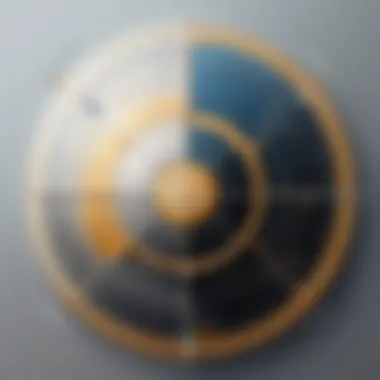
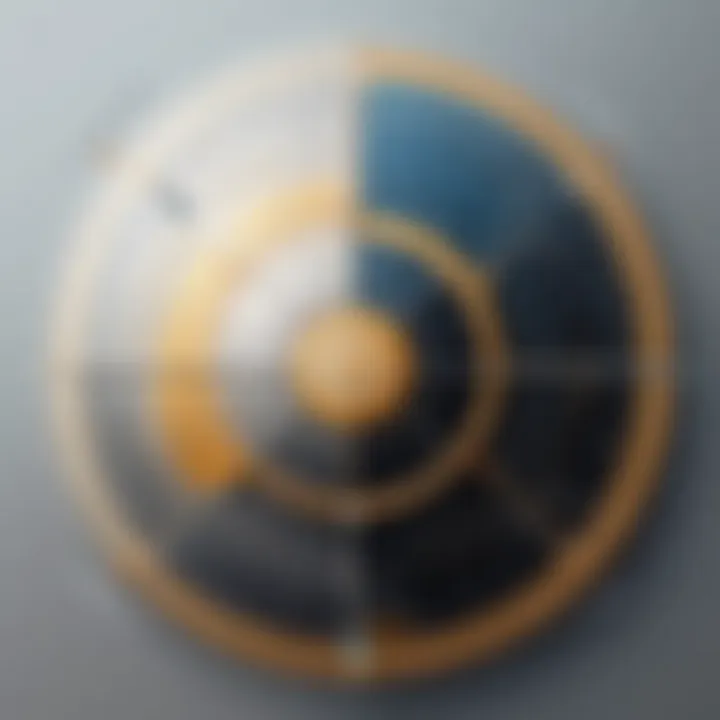
This modern perspective not only enriches the conversation around squaring the circle but also prompts additional questions about the boundaries of mathematical thinking and creativity. As mathematicians engage with these tools, they often reflect on broader philosophical themes such as the nature of existence and knowledge. Indeed, the legacy of attempting to square the circle informs ongoing discussions about mathematical truth, the constraints of traditional methods, and the endless pursuit of understanding.
"Mathematics is not about numbers, equations, computations, or algorithms; it is about understanding. - William Paul Thurston"
In summary, the history of attempts to square the circle spans from ancient antiquity through the Islamic Golden Age to the digital era, showcasing a rich tapestry of human endeavor in mathematics. Each failure has helped cast light on deeper concepts, revealing how the exploration of challenges often yields more than their solutions.
Philosophical and Theoretical Considerations
Delving into the philosophical and theoretical considerations surrounding the concept of squaring the circle unveils layers of thought that stretch far beyond mere geometric constraints. This section emphasizes the significance of these considerations in shaping our understanding of mathematical principles and their broader implications.
The Nature of Mathematical Truth
Mathematical truth, unlike many other domains of knowledge, often holds a unique flavor. At its core, the nature of mathematical truth raises fundamental questions about certainty and proof. Take the famous proof of the impossibility of squaring the circle: it relies on the transcendental nature of pi. This leads to a multitude of philosophical inquiries.
- Epistemology: Understanding where mathematical certainty comes from can feel like trying to hold water in your hands. Does it rest solely on logical deduction, or is there an element of intuition involved?
- Platonic Ideals: Many mathematicians subscribe to a form of Platonic realism, suggesting that mathematical truths exist independently of human thought. This is pivotal when considering unsolvable problems like squaring the circle.
- Pragmatism: Some argue that the relevance of mathematical truth is dictated by its applicability. Hence, even if squaring the circle cannot be achieved, the journey spent understanding it yields insights into other mathematical practices.
"Mathematics is the language in which God has written the universe." - Galileo Galilei
Limits of Human Knowledge and Understanding
Human knowledge, particularly in mathematics, is dotted with limits. The aspiration to square the circle reflects a broader quest for understanding and mastery over nature and space. However, underlying this quest is a reality: some things may be beyond our grasp.
The boundaries of mathematical capabilities can be illustrated through:
- Godel’s Incompleteness Theorems: These assert that within any consistent mathematical system, there are propositions that cannot be proved or disproved. One might liken this to wanting to unlock a door with no key.
- Historical Context: Over centuries, what was once considered impossible has sometimes been accomplished, yet squaring the circle remains a perennial challenge. It stands not simply as a geometric problem, but as a metaphor for the limitations inherent in human thought.
- Cognitive Constraints: The human brain, while formidable, operates within a specific framework, one that can make certain abstract concepts challenging to fully comprehend. This begs the question: Is the idea of squaring the circle a reflection of our limitations rather than a mathematical shortcoming?
The Role of Abstraction in Mathematics
Abstraction serves as a pivotal role in mathematics, particularly within the context of squaring the circle. Through abstraction, complicated real-world problems can be distilled down to their essential components, allowing mathematicians to engage with concepts that may lack tangible representation.
The importance of abstraction can be seen in several dimensions:
- Conceptualization: By stripping away the chaos of reality, mathematicians can focus on pure forms, enabling them to interpret complex ideas such as circles and squares without physical constraints. This highlights the elegance of mathematics.
- Generalization: Insights derived from squaring the circle feed back into other areas of geometry, demonstrating the interconnected nature of mathematical concepts.
- Symbolic Representation: The use of symbols to represent mathematical relationships allows for precise communication of complex ideas. This is akin to speaking a language that, while bizarre, conveys ideas more powerfully than words ever could.
In closing, the philosophical and theoretical aspects of squaring the circle encapsulate an intricate blend of thought, questioning, and insight, making it a topic of perennial relevance in both historical and contemporary contexts.
Modern Applications and Implications
When we think about squaring the circle, it's easy to get caught up in the historical struggles of mathematicians seeking a geometric solution. However, the relevance of this concept goes beyond mere historical curiosity. In today’s world, squaring the circle embodies broader implications in fields such as computational geometry, physics, and even art. Each of these areas intricately connects with the mathematical principles underlying this ancient challenge.
Computational Geometry and Algorithms
Computational geometry, a branch of computer science focused on the study of geometric objects and their properties, has greatly evolved over the past few decades. Algorithms designed to solve geometrical problems often find themselves grappling with the principles that underpin squaring the circle. As we dive into this subject, it's clear that squaring the circle doesn't just live in textbooks; it continuously informs modern computational methods.
One prominent example is the Voronoi diagram, which helps in partitioning spaces into regions based on proximity to given points. Tackling computational challenges requires precision in geometric calculations, and the lessons learned from squaring the circle aid in refining these methods.
However, it’s not just about theoretical knowledge. In practical applications like computer graphics and geographical mapping, algorithms based on geometric principles allow for accurate modeling and simulation. For instance, rendering a circular object or calculating areas in video games requires a sound understanding of pi and its implications, principles rooted in the struggles of squaring the circle.
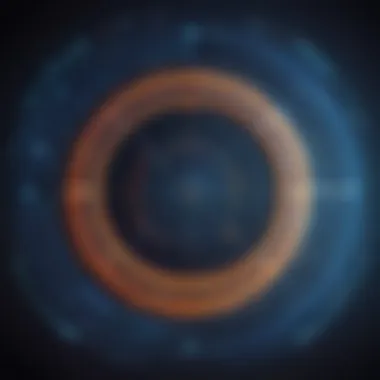
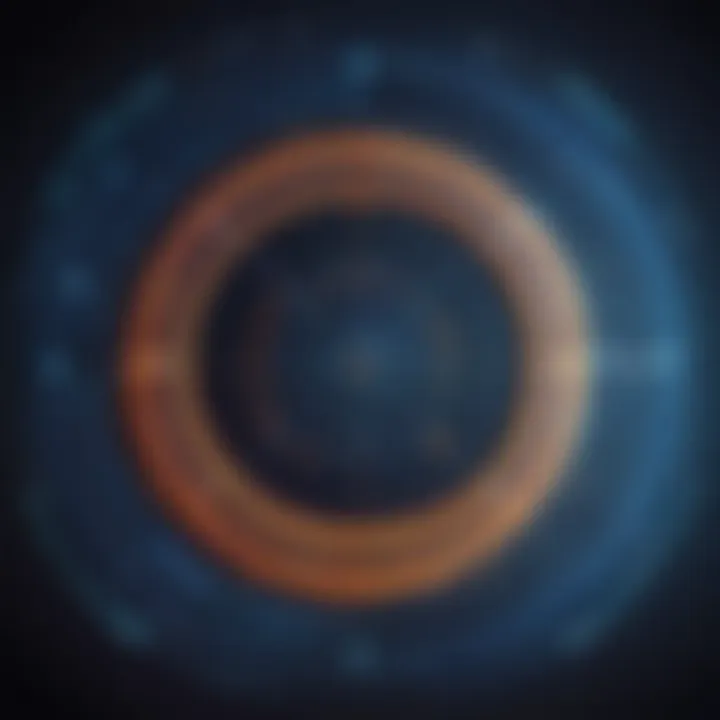
Connections to Modern Physics
The implications of squaring the circle extend into the realm of modern physics as well. In a discipline where theoretical concepts often defy tangible understanding, the quest for representing circular and spherical forms—fundamental shapes governing the universe—often wrestles with the challenges of squaring the circle.
Consider the relationship between quantum mechanics and the nature of wave functions, which are often represented as circular or spherical waves. The inability to square the circle signifies limitations in our understanding of these phenomena. Physicists are always trying to bridge gaps between theoretical predictions and empirical evidence, which echoes the historical attempts to find a solution to squaring the circle.
Astrophysics also draws connections to this concept, especially when considering circular orbits around celestial bodies. Understanding gravitational forces and the resulting circular motion invites discussions surrounding the geometric and algebraic principles that squares the circle encapsulates.
Art and Design: The Practical Side of Mathematical Concepts
The influence of squaring the circle is not limited to science and technology; it permeates art and design as well. Artists have long been enamored by mathematical concepts, using them to create compelling visuals that captivate viewers. Take the process of designing logos or architectural structures, where circular elements are often aesthetically pleasing.
Visual artists frequently tackle soft constraints dictated by geometry. The challenge of incorporating both circular and rectangular forms in their compositions reflects a modern take on squaring the circle. Pioneers in design like M.C. Escher and Frank Lloyd Wright have used such principles to create works that weigh the tension between natural forms and rigid geometrical involving, echoing the age-old struggle of mathematicians.
Moreover, the field of generative design relies on algorithms that embody such mathematical principles, producing innovative structures that might otherwise go unimagined. These designs not only challenge our understanding of form but also invite further inquiries into how we define boundaries in both mathematics and art.
"The task of squaring the circle has provided an enduring source of fascination—a metaphor not only for mathematical challenges but for the very nature of human inquiry."
Understanding modern applications of squaring the circle and its implications provides us with an enriched perspective. From computational algorithms to the realms of physics and artistic creation, it serves as a reminder that mathematical dilemmas transcend their original contexts, offering insight and potential across disciplines.
The Legacy of Squaring the Circle
The concept of squaring the circle carries a legacy that transcends mere mathematical curiosity. It symbolizes the complex relationship between mathematics, philosophy, and human creativity. For centuries, this pursuit has not only challenged minds but also ignited discussions about the limits of human achievement and understanding. Through the lens of history, squaring the circle emerges as a focal point that illustrates the evolution of mathematical thought and the philosophical investigations tied to the nature of knowledge itself.
The implications of this legacy are manifold:
- Cultural Influence: The phrase "squaring the circle" has transitioned from a mathematical challenge to a metaphor used in literature, art, and conversation to describe seemingly impossible tasks. It now embodies the human spirit's resilience in the face of insurmountable odds. Many creative minds, from poets to musicians, have drawn on the chase for this geometric solution as a means of exploring deeper truths in their work.
- Intellectual Rigor: This quest has driven significant advancements in mathematics. The debates surrounding the impossibility of squaring the circle push the boundaries of what constitutes mathematical inquiry. The thinkers engaged in this pursuit—ranging from ancient Greeks to contemporary mathematicians—demonstrate a unique intellectual vigor that unites them across the ages.
- Philosophical Inquiry: At a more abstract level, squaring the circle leads to profound questions regarding the nature of reality. As mathematicians and philosophers grapple with the implications of its impossibility, they speculate on the limits of human knowledge and comprehension. The legacy of this pursuit challenges individuals to consider the very foundations of mathematical truth and its implications on broader existential questions.
Overall, the legacy of squaring the circle is not just about mathematics; it resonates deeply with art, culture, and the philosophical inquiries that underpin human existence. This interdisciplinary embrace continually reinvents the significance of the circle and the square, making them symbols of human endeavor and curiosity.
Cultural References and Interpretations
The phrase "squaring the circle" appears frequently in cultural texts, often as a representation of struggling against insurmountable challenges. Literature often portrays characters attempting to achieve the impossible, mirroring the attempts of mathematicians grappling with this geometric challenge. For example:
- In poetry, the quest for an unattainable goal reflected cultural values of perseverance.
- In modern visual arts, the imagery of circles and squares illustrates the tension between order and chaos, embracing the duality of these geometric forms.
Through engaging with these texts, audiences can reflect on personal challenges in their lives, uncovering meaning in struggles that echo the mathematical endeavor.
Continuing the Discourse: What Lies Ahead?
The discourse surrounding squaring the circle is far from over. With every advancement in technology and mathematics, new paths for exploration arise. Emerging fields such as computational geometry offer fresh perspectives on this traditional problem.
- Future Explorations: One area ripe for exploration involves the intersection of art and technology. How can contemporary digital tools allow us to visualize and approach this classical problem in ways that were previously unimaginable?
- Educational Reflection: Integrating topics like squaring the circle into educational curricula could inspire the next generation of mathematicians and philosophers, continuing the dialogue between multiple disciplines.
The journey of exploration invites both skepticism and wonder, ensuring that as long as curiosity exists, so does the relevance of squaring the circle.
Reflections on Mathematical Pursuit and Human Curiosity
The relentless quest to square the circle serves as a testament to human curiosity and the drive to push boundaries. This legacy reminds us that mathematics is not just a discipline; it's a way of exploring the fabric of the universe itself. Through these explorations, we uncover:
- Understanding Limits: The knowledge that certain problems may remain unsolvable urges thinkers to respect the limitations inherent in human inquiry.
- Celebration of Achievement: Each attempt to tackle this challenge, whether successful or not, signals an undying quest for knowledge.
Ultimately, squaring the circle acts as a mirror reflecting our depths of thought, creativity, and determination. This pursuit remains a living narrative, shaping the identity of mathematics as an ongoing dialogue between humanity and the cosmos.







